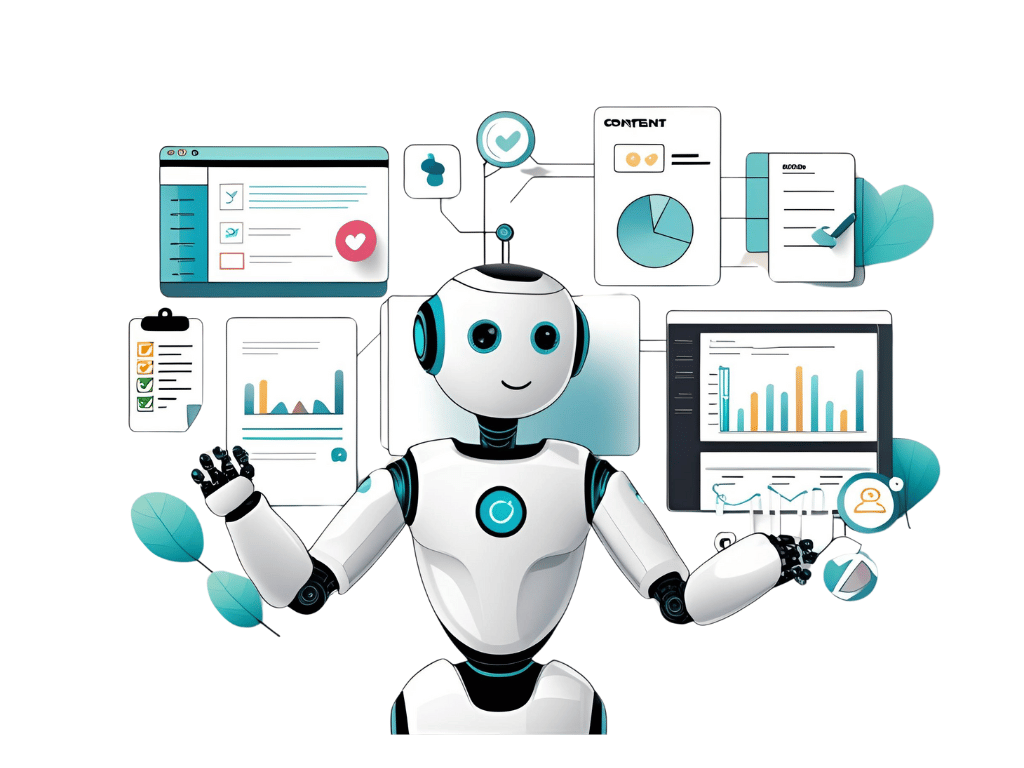- 8 min read

Your sales team is drowning in lead data. You’ve got a CRM, a newsletter list, four tracking pixels, and three different versions of the same buyer persona living in a Google Doc somewhere.
And yet—you’re still sending the same blasted campaign to everyone.
Somewhere, a high-intent prospect gets the same email as your barely-interested tire-kicker. Meanwhile, churn creeps up. Your ads are inefficient. Nobody opens the nurture sequence you lovingly built in Q3. It's like yelling into a void and hoping the right people hear you.
Here’s the kicker: it’s not your fault. It's just that **manual audience segmentation is broken**—too slow, too surface-level, and way too reliant on outdated assumptions ("Male, 34, lives in Denver" doesn’t exactly scream valuable insight).
But here's the good news: AI-powered audience segmentation is changing the game. And you don’t need to be Google to use it.
If you want to impress your boss or sound fancy at a networking event, go ahead and say: “Audience segmentation is the process of dividing your target market into distinct groups based on shared characteristics or behavior patterns.”
But here's what it actually means: Know who you're talking to—then treat them differently based on what they want, not what you assume.
Traditional audience segmentation was like sorting people into bins: age, gender, location, maybe income or job title if you were feeling spicy. But that left out the most important factor: real-world behavior.
Now we’ve got tools that track clicks, session time, feature usage, email opens, abandoned carts—and can learn from those patterns, at scale. It's like hiring a robot to watch what your customers really care about, then whisper that intel into your marketing team's ear. (Creepy? Maybe. Effective? Absolutely.)
So what changed? Two things: **data overload** and **machine learning**.
You’re already sitting on a bonkers amount of raw data. You just haven’t harnessed it. That’s where AI walks in—like the cool new operations hire who doesn't flinch at scattered spreadsheets or half-labeled lead lists.
AI-based segmentation tools don’t just slice and dice your contacts. They learn. They evolve based on behavior. And they predict who’s likely to buy, churn, refer a friend, ghost you, or turn into your next big-ticket customer.
According to MarketingProfs, 77% of marketers say AI-based segmentation is essential for delivering personalized experiences. It's not a nice-to-have anymore—it’s expected. Customization is the new baseline.
It’s why companies using predictive segmentation see up to a 15% sales increase and improve customer satisfaction by as much as 20%, according to Forrester Research.
Let’s cut through the noise. Here’s what separates solid AI audience segmentation tools from poop-in-a-UI platforms with nice logos:
A few platforms offer good building blocks. Some teams use basic segmentation layers in generic CRMs or email platforms. Others plug in AI-driven analytics tools to track behavior and segment audiences automatically (based on CLTV prediction, engagement velocity, etc.).
If you’ve ever worked with Amplitude, Klaviyo, or Segment.io—this is the kind of firepower we’re talking about. The best part? You don’t need to be an analyst to use them. We design custom setups for teams that just want the thing to work.
Every month, 12% of their users just… disappear. Post-onboarding engagement is low. Emails aren't converting.
We installed an event-based segmentation tool linked to product analytics. Within a week, we saw clear behavioral cohorts: “Quick-start power users,” “Tinkerers still confused after week one,” and “Logged in once, never again.”
We automated onboarding flows tailored to each group. Churn dropped by 28%. Support tickets fell. Users re-engaged. The team sent fewer emails—and got higher conversion.
Leads were coming in. Deals were closing. But marketing had no idea which campaigns were driving real accounts. It was analytics spaghetti.
We used automated audience segmentation + CRM syncing to group leads by referral source, lead score trajectory, and sales velocity. Anyone in the "slow drift" group got added to a hyper-relevant drip nurturing sequence built to re-ignite stalled deals.
Close rates rose by 19%. Marketing stopped wasting time. Everyone finally understood which audiences were ready to buy—and which needed more warming up.
If you’re not sure where to begin, start with who’s ghosting you. That drop-off rate? That customer who used to engage and now doesn’t? That’s where segmentation can immediately bring ROI.
Eventually, smart teams won’t be hand-picking audiences or building rules from scratch. They’ll set high-level goals (“retain more post-trial users,” “upsell this tier,” “target B2B execs with urgency”), and their audience segmentation software will do the rest—building, testing, tweaking on the fly.
You’ll watch as your segments reshape themselves as behavior shifts. It’s already happening. And it doesn’t take a 20-person data team to get there.
Want to join the teams already doing this? You don’t have to build from scratch. We’ve got semi-custom marketing and sales automation systems that plug right into what you’re already using—or we’ll custom-build what you actually need.
Your audience is telling you who they are. Right now. Every click, tap, scroll, and bounce holds insight. AI helps you listen—and act—without becoming a spreadsheet zombie.
Book a free Workflow Optimization Session and we’ll map how segmentation and automation can save your team time, boost conversions, and stop the chaos.
No hype. No pressure. Just clarity, and one less dashboard giving you heartburn.
River Braun, founder of Timebender, is an AI consultant and systems strategist with over a decade of experience helping service-based businesses streamline operations, automate marketing, and scale sustainably. With a background in business law and digital marketing, River blends strategic insight with practical tools—empowering small teams and solopreneurs to reclaim their time and grow without burnout.
Schedule a Timebender Workflow Audit today and get a custom roadmap to run leaner, grow faster, and finally get your weekends back.
book your Workflow optimization session